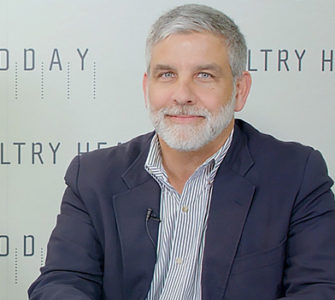‘Rotate smarter,’ says coccidiosis specialist
Poultry producers need to “rotate smarter” and learn the differences between anticoccidials if they want to maintain effective and sustainable coccidiosis-management programs, says well-known coccidiosis specialist Greg Mathis, PhD, Southern Poultry Research, Athens, Ga.
“When was the last time the world’s poultry industry got a new anticoccidial — 15 or 20 years ago?” he asks. “We still have good tools available, but we need to do whatever we can to preserve their effectiveness and optimize their performance. Planning ahead and thinking about your program 12, 18 and even 24 months from now is a huge step in the right direction.”
He says rotating ionophores within the same family is one of the most common mistakes he sees with coccidiosis-management programs.
“I see producers rotating from, say, monensin or salinomycin to narasin, but all they’re doing is rotating from one monovalent ionophore to another,” he says. “They’d be better off rotating to a divalent ionophore, a chemical or even a vaccine.”
“Planning ahead and thinking about your program 12, 18 and even 24 months from now is a huge step in the right direction.”
Posted on September 19, 2015

















